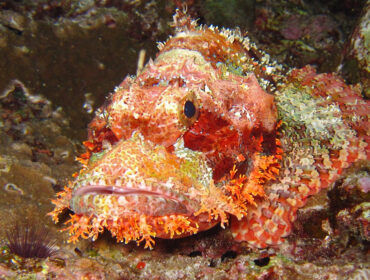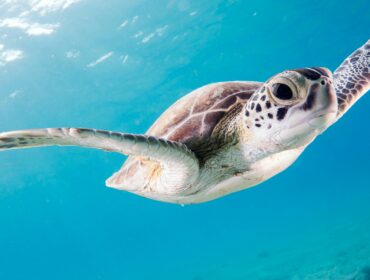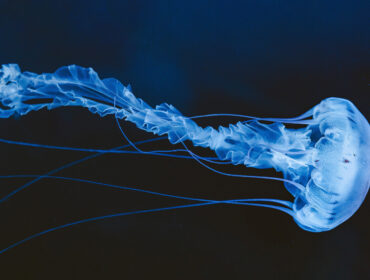Seabirds are so often overlooked in discussions of marine creatures, when they are actually a large part of marine ecosystems. Sailors have long found them to be beneficiaries at sea, because they act as indicators of land, or a mass of fish. Fisheries find them useful for their guano, which can assist in fertilization of surrounding seas. Sadly, great numbers of seabirds are killed each year from entanglement in fishing lines and nets, as well as consumption of plastic, mistaking it for prey. Birds are some of Earth’s most ancient inhabitants, and each species has their own unique qualities. Here are 7 of our favorites!
Black-Footed Albatross
The black-footed albatross is most noticeably different from other albatross by its dark plumage. These seabirds take residence mainly in the North Pacific Ocean, nesting on isolated tropical islands of Japan and Hawaii. These birds are pelagic feeders, consuming fish and their eggs, as well as squid and the occasional crustacean. Because they consume so much seawater during their hunt, their beak is equipped with a salt gland that desalinates their bodies, and is secreted as almost pure sodium chloride.
Red-Throated Loon
This migratory seabird can be found widely throughout the northern hemisphere, and breeding takes place in Arctic waters. The characteristic red throat for which the bird is named is actually only present during breeding season. Red-throated loons breed with only one partner for their entire lives. Although this bird is protected under several international treaties, some of the species are in decline due to environmental disasters and entanglement in fishing nets. Curiously, this bird is incapable of walking on land, but is incredibly adept at taking off from small bodies of water.
Double Crested Cormorant
The double-crested cormorant has a wide range of habitat, from as north as Canada to as south as the Bahamas, but it generally prefers warmer climes. The namesake crests on its head are only apparent in breeding season, and can vary in shades of white, grey, or black. Although its feathers are not entirely waterproof, it dives beneath the surface to catch fish, and will hunt in the ocean, lakes, and rivers. Double-crested cormorants are very social birds, often found living in colonies that include other species of seabirds.
Black Oystercatcher
The black oystercatcher is a shorebird, ranging in habitat from rocky shores of Alaska to Baja California, but it does not usually stray far from its coastal habitat. As its name suggests, this seabird is indeed fond of molluscs, and its long, bright red beak is incredibly capable of prying open their shells. The black oystercatcher also forages in intertidal zones for crustaceans, barnacles, and isopods, using its sharp eyesight as its main hunting tool. The shells of black oystercatcher eggs are quite hardy, and can survive being submerged in a high tide.
Marbled Murrelet
This tiny coastal seabird hails from the North Pacific, and it feeds underwater on fish at sea, as well as inshore bays and freshwater lakes. The marbled murrelet does not reach breeding maturity until two years of age, where it nests high atop the branches of old-growth forest conifers. It lays just one egg on a bed of moss on the branch, and when the chick is old enough to fledge, it flies directly to the sea from the nest, unaccompanied by an adult. Unlike many birds, the marbled murrelet nests and hunts in a solitary manner, rather than within a colony.
Arctic Tern
The Arctic tern is an abundant species of seabird, found in all of the Arctic and sub-Arctic areas of North America, Asia, and Europe. This plunge-diver’s diet is comprised mainly of juvenile shoaling fish such as herring and cod, but will also consume small crustaceans, insects, and berries. The Arctic tern can live to be more than thirty years old. It is renown for its migratory patterns, which allow for the Arctic tern to experience two summers and cover an incredible distance of more than 40,000 miles per year!
Long-Tailed Jaeger
The long-tailed jaeger is quite the conniver, often enjoying its meals of fish that have been stolen from other seabirds, known as kleptoparasitism. This migratory seabird nests on the dry, cold tundras of Arctic regions in Russia, Canada, and Alaska, but winters in the warmer south Atlantic and Pacific Oceans. Its nearly foot-long tail has two distinctive streamer feathers about six inches in length. The long-tailed jaeger will eat a variety of stolen or hunted foods, including small birds and mammals, carrion, and scraps of fish and other edible debris. It is one of few species of birds that are not generally afraid of humans.




